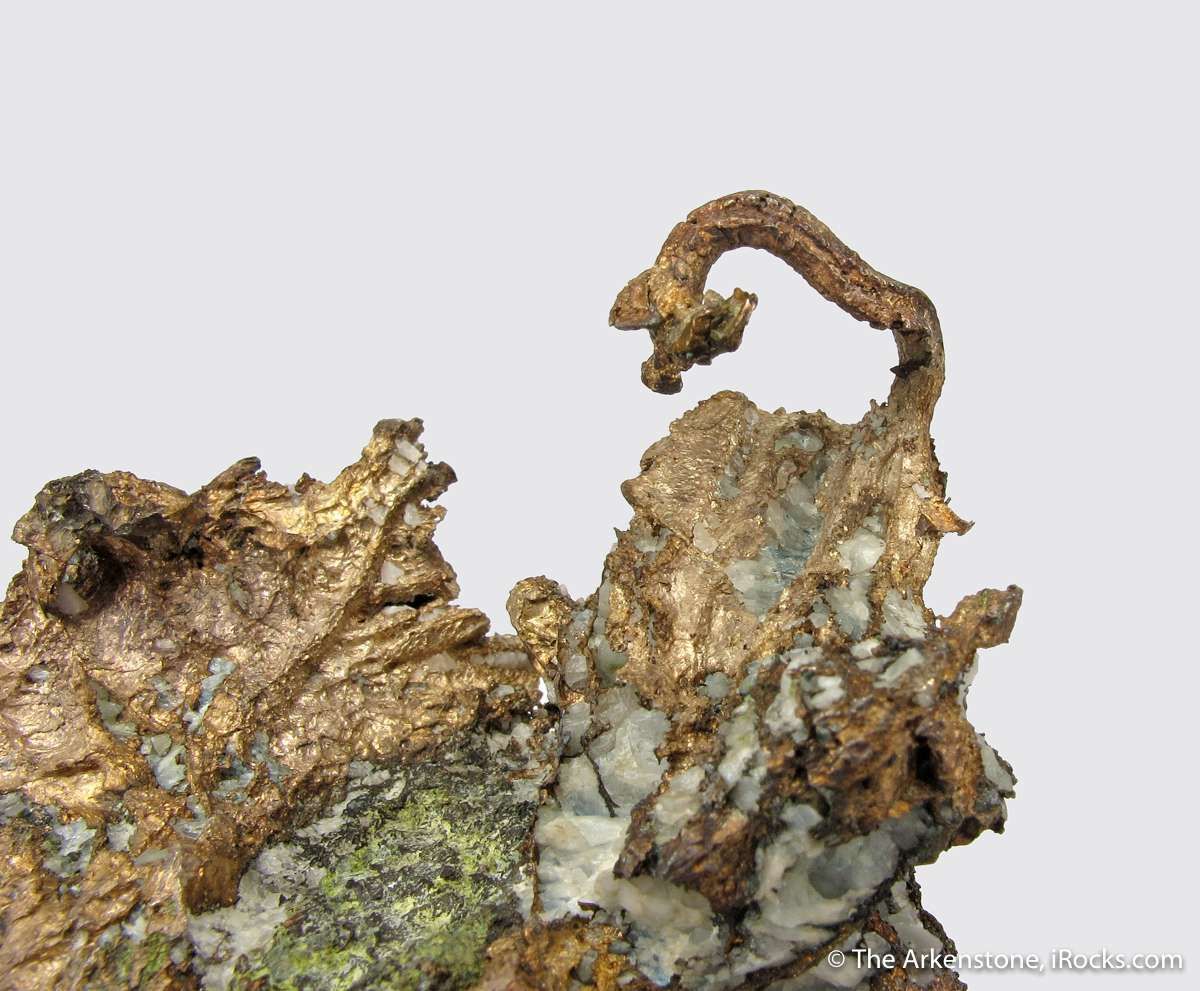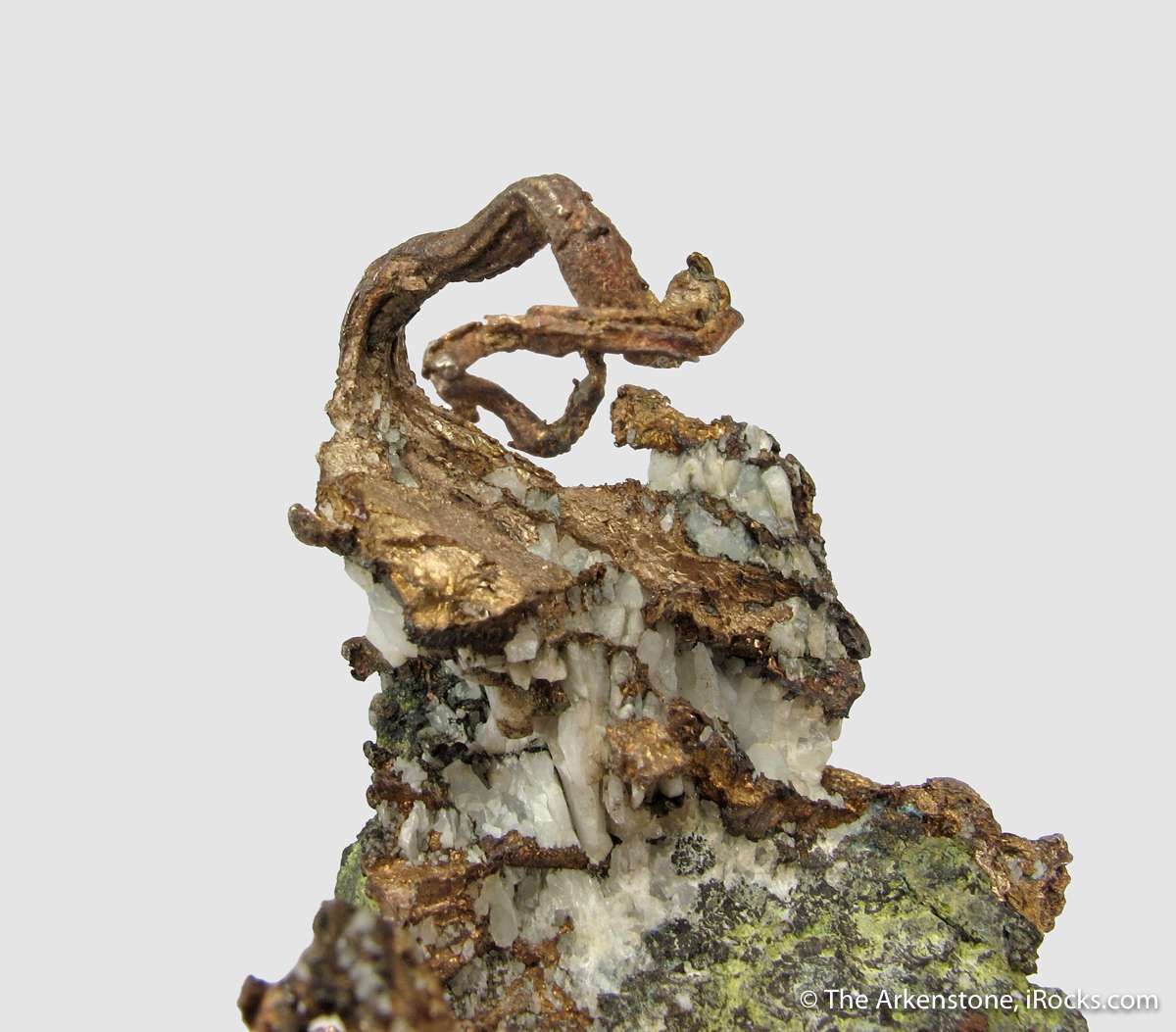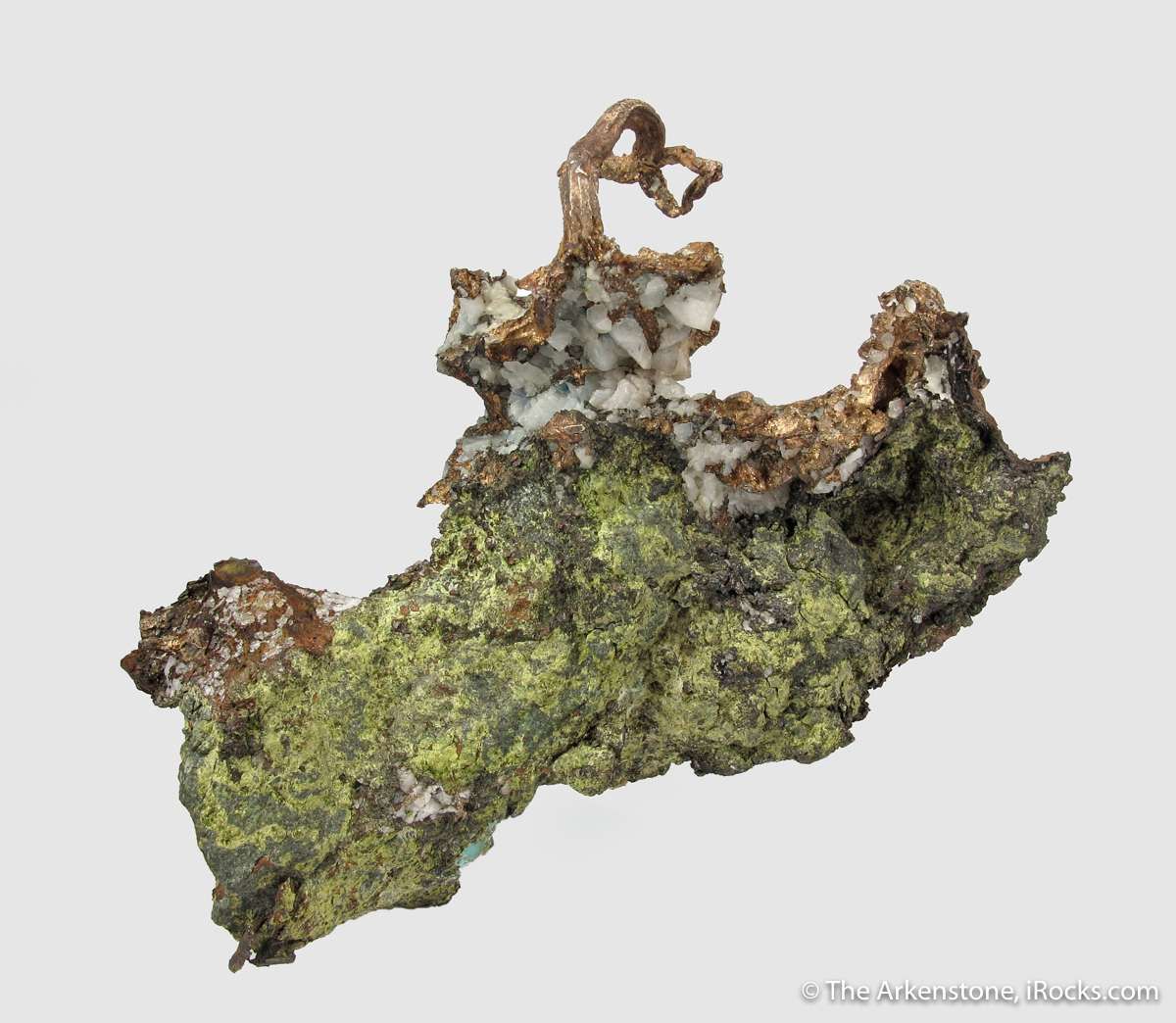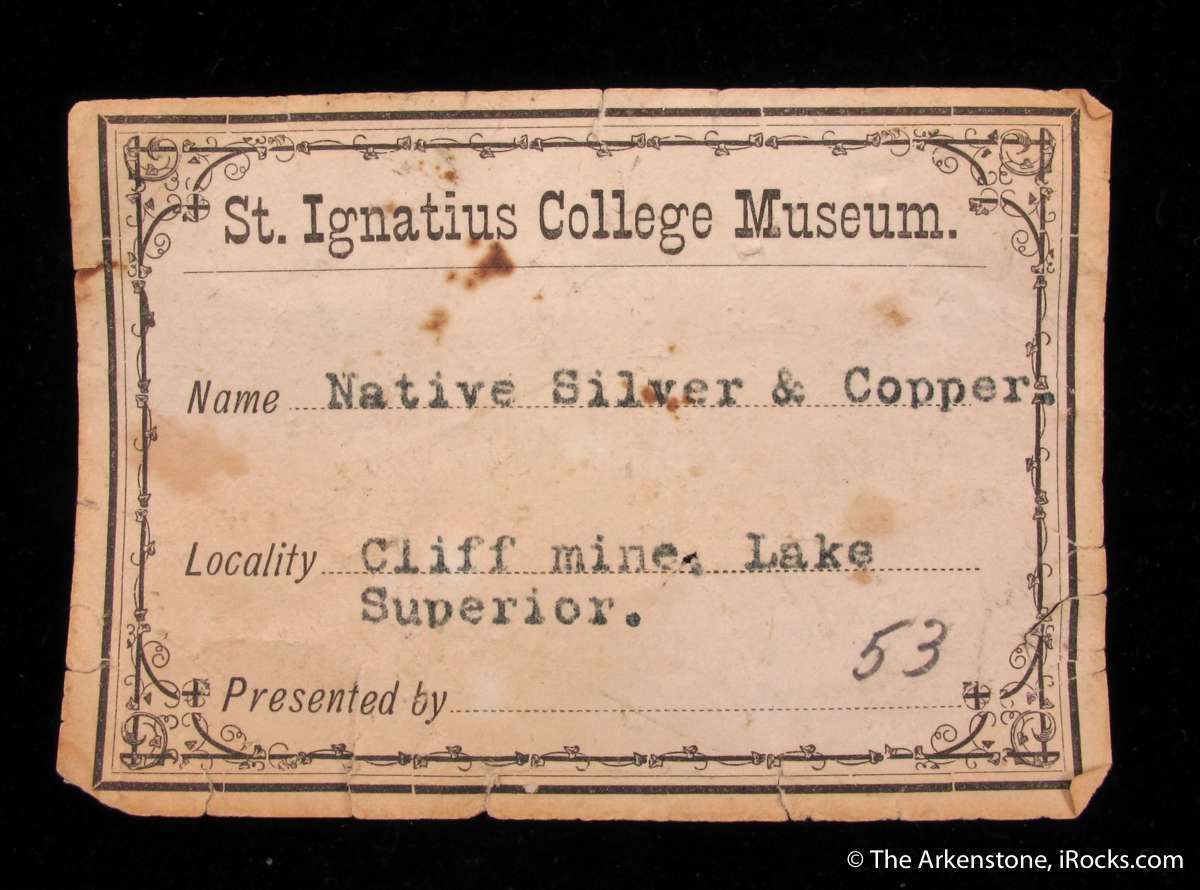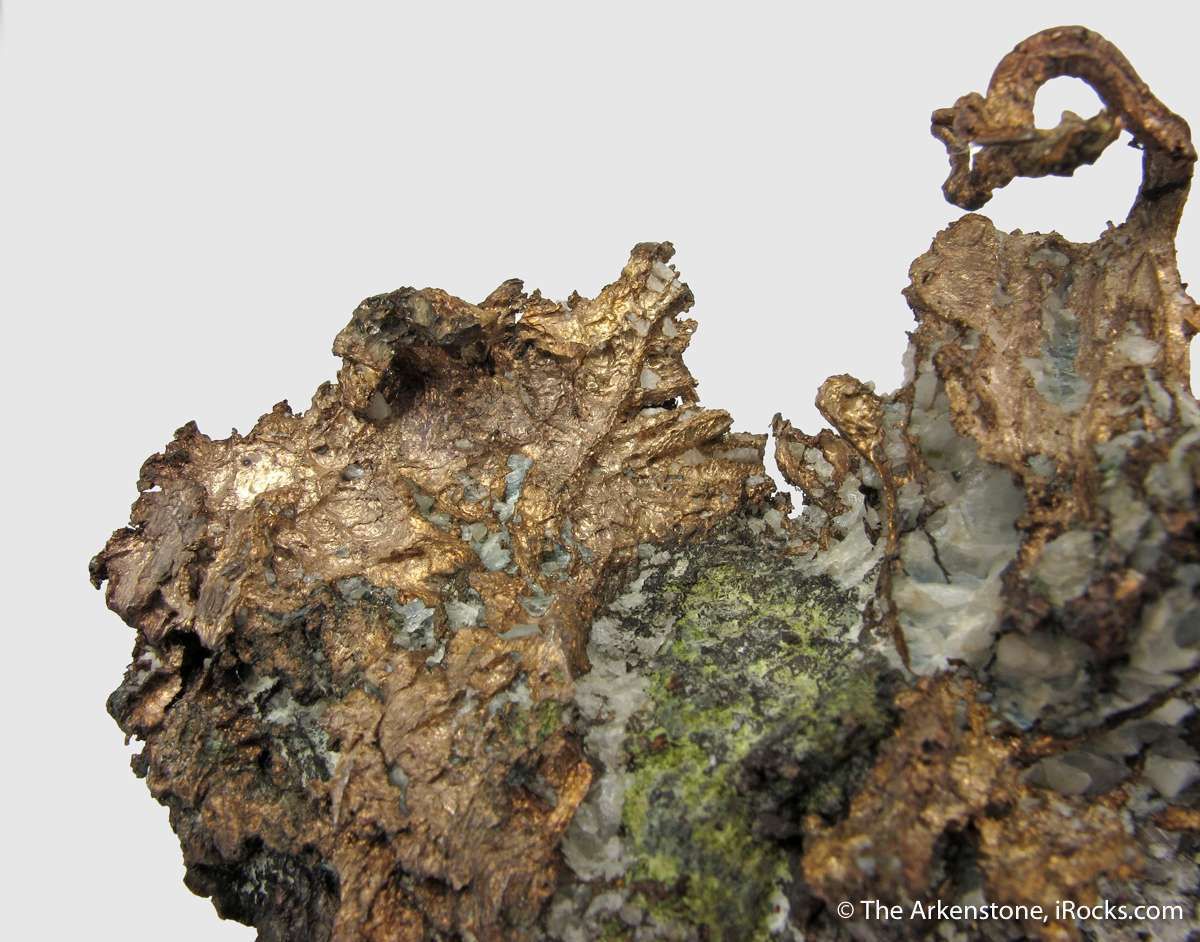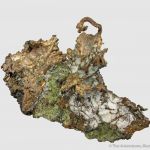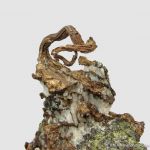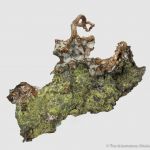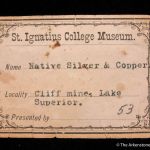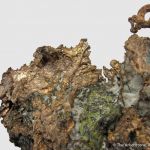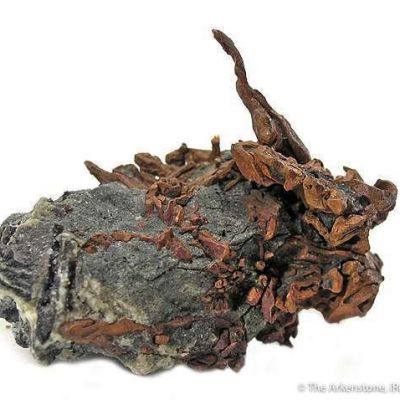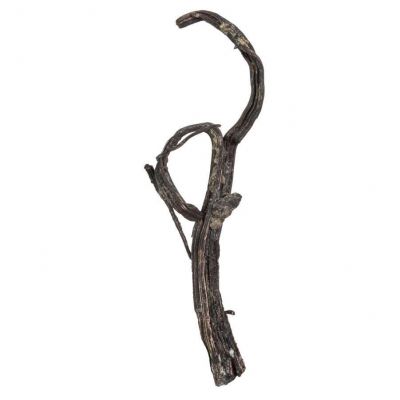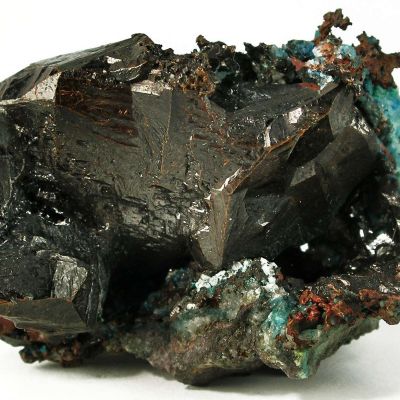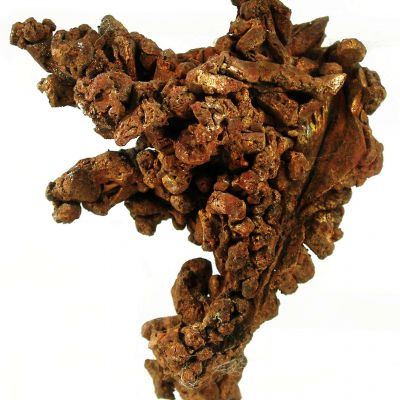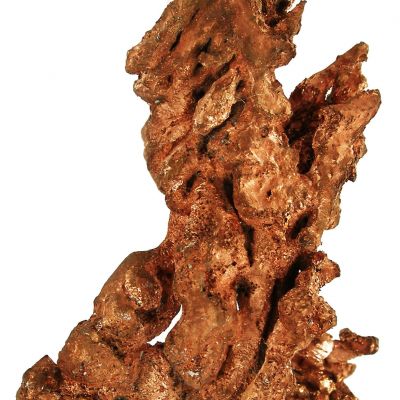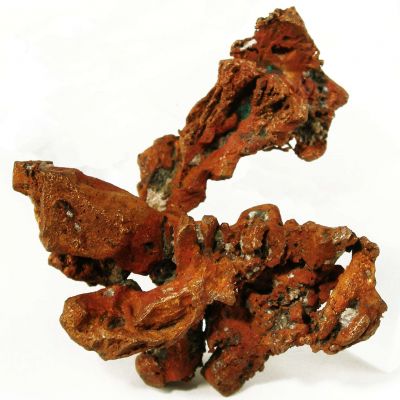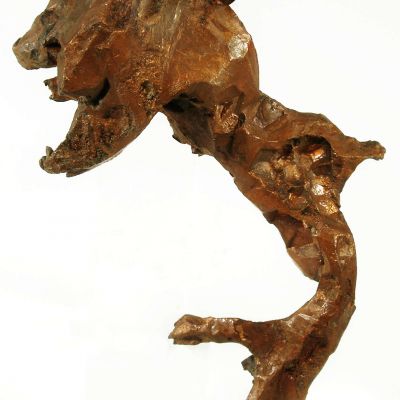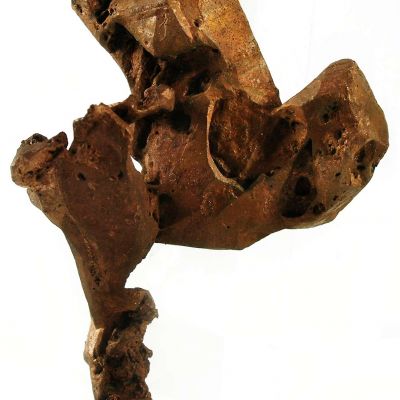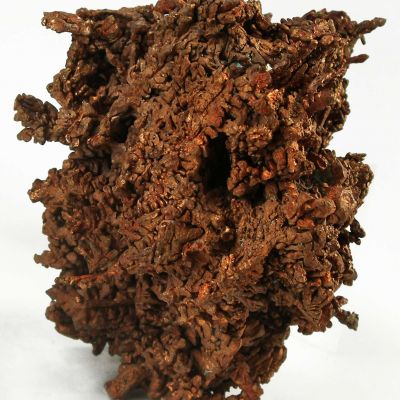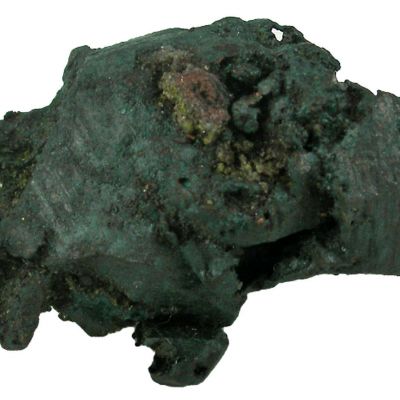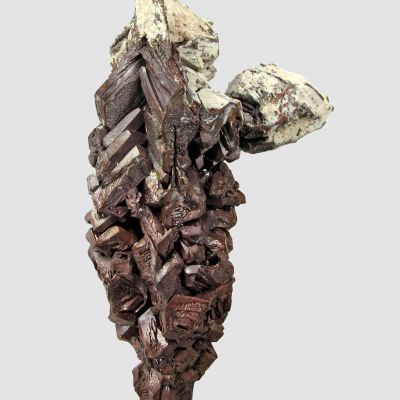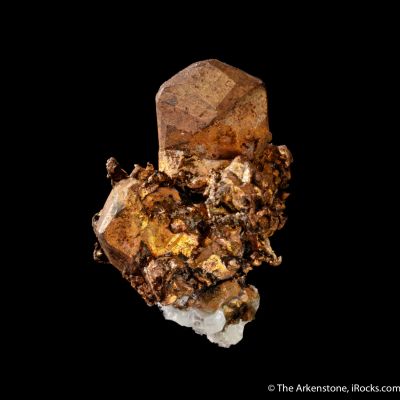- KRB-14
- Native Silver on Copper with Epidote (mid-1800's)
- Cliff mine, Phoenix, Keweenaw Co., Michigan, USA
- Cabinet, 9.7 x 6.0 x 4.5 cm
- Ex. Kay Robertson
- SOLD
Exquisite, this unique wire Silver and Copper combination is from the famous Cliff Mine, and it has a lot of eye appeal going for it aside from a surprising fact: it seems to be the only large validated Michigan WIRE silver we can find record of. Wire silvers are simply not known to occur in Michigan, and in fact are generally thought not to occur in the absence of acanthite as in other deposits like Kongsberg and Saxony. The striations on the wires here are even similar to those locales, though the matrix with copper and epidote squarely indicates a Michigan origin, distinct from any other silver locality. This wire silver specimen therefore is a very important USA piece, and it indicates a remarkable, small aberration of the local environment in which it formed, resulting in a unique specimen (as confirmed with the Seaman Museum, whose curator adds: "I would trust the locality...Cliff had a lot of silver, very little of which was preserved"). The Silver dominates the specimen, presenting with both an outstanding patina and rich color. The ramshorn growth of wire is attractive and striated, and this beautiful arborescent growth is a full 3 cm tall. A truly impressive Michigan silver, this cabinet specimen actually looks good on both sides. Old-time Copper Country material, as the Cliff Mine closed in 1887. Much better in person, even. Formerly in the collection of the St. Ignatius College Museum in Chicago. Interestingly, this collection was built largely between the 1870-190s in the heyday of Michigan mining, and later became the museum of Loyola University. A fascinating article on the history of the collection can be found on the Mineralogical Record archives, here: http://www.minrec.org/labels.asp?colid=593. A short excerpt follows: The mineral collection of St. Ignatius College in Chicago came from Rev. Francis X. Shulak, a Jesuit who was born in 1825 in Nacice, Moravia, was ordained in France and lived there four years, then for 20 years did missionary work in Europe. In 1865 he was sent to the United States, where he served as Professor of Geology at St. Ignatius from 1870 to 1901. On August 19, 1907 he was transferred to Cracow, Galicia, where he died January 28, 1908. He spoke eleven languages and was a naturalist and chemist. His large and valuable collection of mineral and botanical specimens was donated to St. Ignatius shortly before it became Loyola University.
